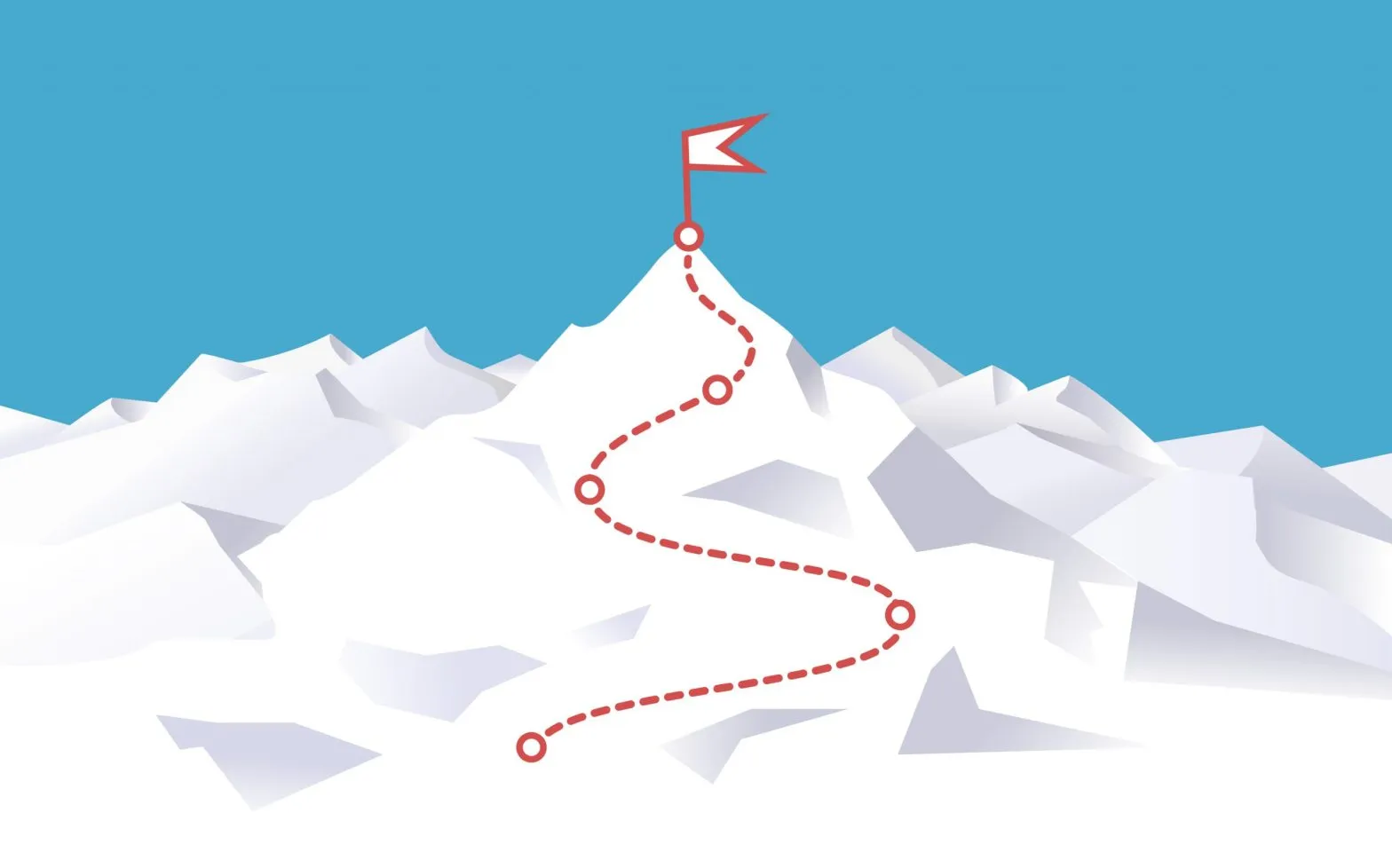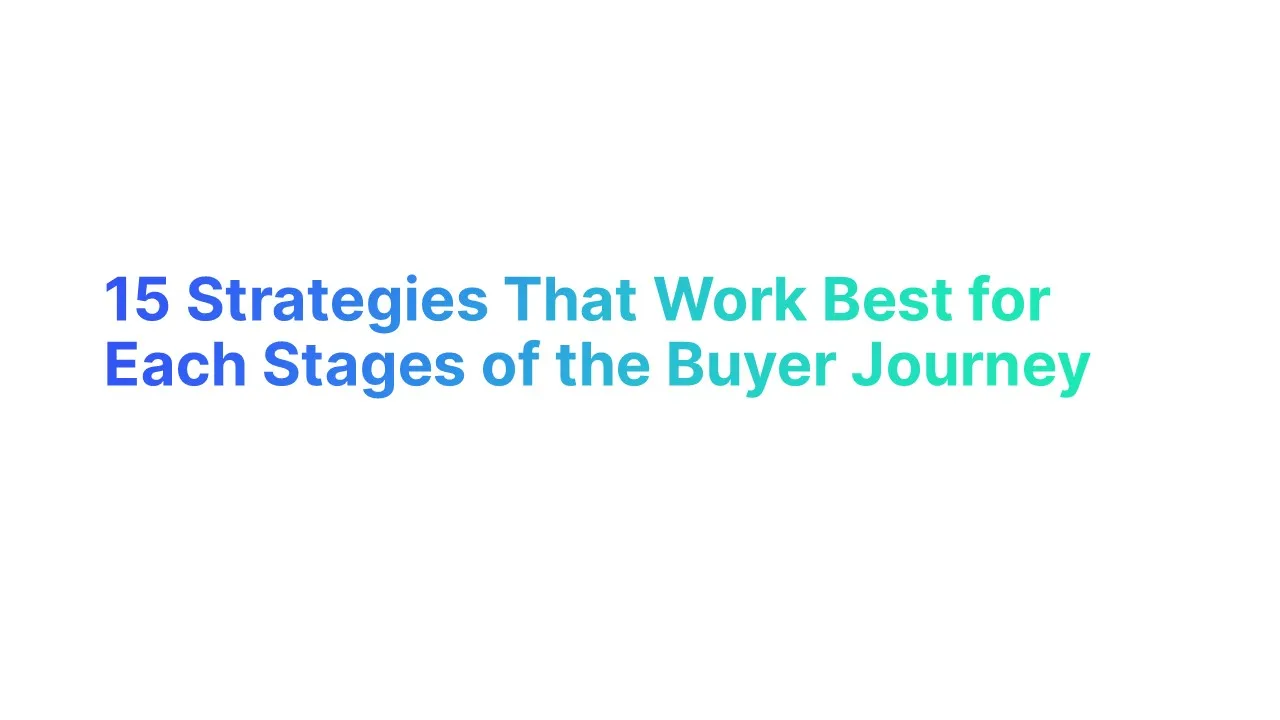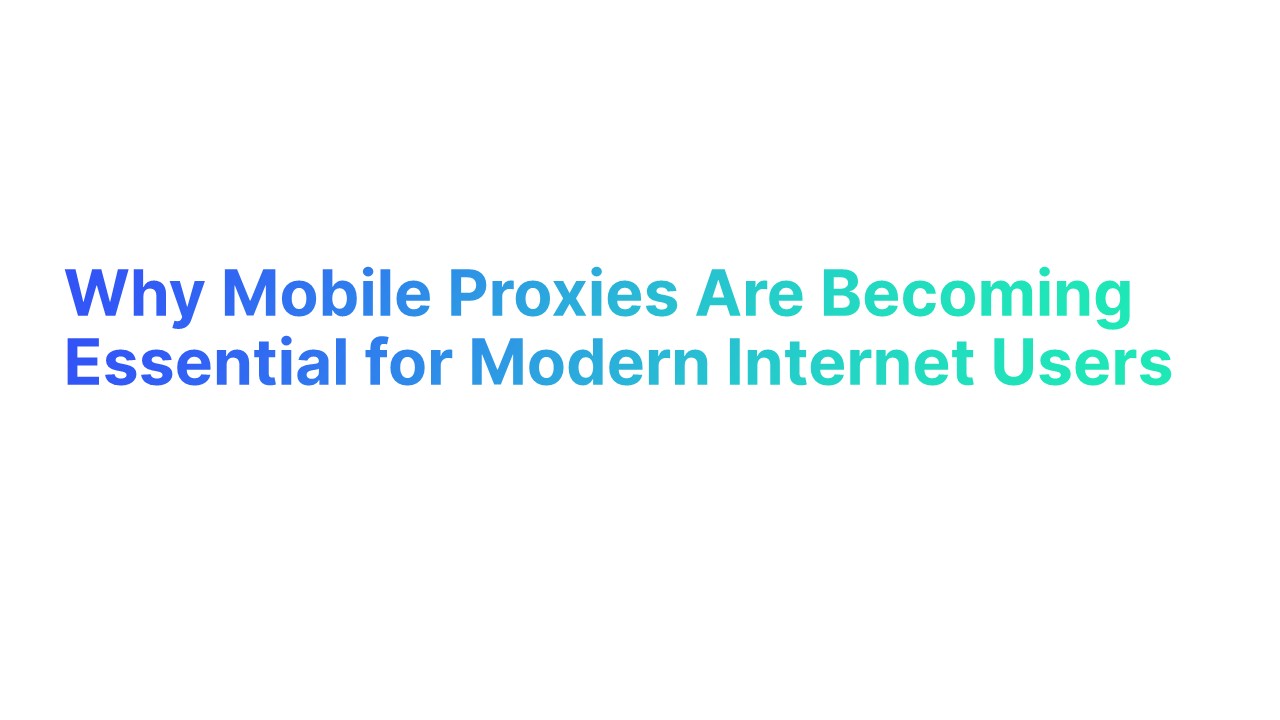Introduction to the Buyer Journey

What Is the Buyer's Journey?
The buyer's journey refers to the process consumers go through to become aware of, consider, evaluate, and decide to purchase a new product or service. This journey can be segmented into three main stages: awareness, consideration, and decision.
In the awareness stage, the buyer realizes they have a problem. For example, a study showed that 72% of buyers use Google during the awareness phase to find educational material. Next, in the consideration stage, the buyer defines their problem and researches options to solve it.
According to HubSpot, 60% of consumers consider 2-3 options during this phase.
Finally, in the decision stage, the buyer chooses a solution, where statistics indicate that over 80% of buyers conduct detailed comparisons before making their final purchase.
Difference Between B2B and B2C Buyer's Journeys

The B2B (Business-to-Business) and B2C (Business-to-Consumer) buyer's journeys differ significantly in complexity and length:
1. Length and Complexity
The B2B journey tends to be longer and more complex, involving multiple stakeholders. For instance, Gartner found that the typical buying group for a complex B2B solution involves 6 to 10 decision-makers.
Each of these members consumes at least five pieces of content during the decision-making process. In contrast, the B2C decision-making process might involve only one or two individuals making a decision based on personal preference, price, or brand loyalty.
2. Decision-Making Process
In B2B, the decision process is highly analytical and ROI-driven, as 77% of B2B buyers stated the importance of ROI in their purchasing decisions according to a LinkedIn study.
B2C buyers are more likely to be influenced by emotional triggers, convenience, and brand reputation.
3. Buyer’s Journey Content
B2B buyers consume content that demonstrates expertise and ROI, such as whitepapers, case studies, and detailed product comparisons. Conversely, B2C consumers respond well to emotional storytelling, reviews, and quick, digestible content like social media posts and videos.
A Content Marketing Institute report noted that 67% of B2C marketers find live events effective for consumer engagement during the buyer’s journey.
Exploring the Stages of the Buyer Journey

The Awareness Stage: Identifying Needs and Challenges
The awareness stage marks the beginning of the buyer's journey, where potential customers realize they have a problem or need but are not yet ready to buy. They are typically seeking informational content to understand and frame their problem more clearly.
What is the Customer Doing in This Stage?
In the awareness stage, customers are:
- Identifying symptoms of a potential problem or opportunity.
- Conducting initial research to more clearly understand, frame, and give a name to their problem.
- Looking for educational content, expert advice, or peer experiences to help them articulate their needs.
Key Questions to Ask in This Stage:
- What symptoms are causing potential customers to believe they have a problem?
- What information do they need to understand their problem better?
- How can we present our brand as a helpful resource?
The Consideration Stage: Evaluating Options and Solutions
The consideration stage is a critical phase in the buyer's journey where potential customers have clearly defined their problem or need and are actively looking for solutions to address it. At this point, they evaluate different products, services, or approaches that could potentially solve their issue.
What is the Customer Doing in This Stage?
During the consideration stage, customers are:
- Evaluating various options, services, or products that can solve their identified problem.
- Comparing features, benefits, and prices of different solutions.
- Seeking more in-depth information about each option to make an informed decision.
Key Questions to Ask in This Stage:
- What solutions are customers considering, and what are their criteria?
- How do they perceive the advantages and disadvantages of each option?
- What additional information can guide them towards a decision?
The Decision Stage: Making the Final Purchase Decision
The decision stage is the final phase in the buyer's journey where potential customers have assessed their options and are ready to make a purchase decision. This stage involves a deeper evaluation of the chosen solution, negotiation of terms, and ultimately, the commitment to buy.
What is the Customer Doing in This Stage?
During the decision stage, customers are:
- Reviewing their top choices in detail to finalize their decision.
- Looking for final validation through reviews, testimonials, or additional data.
- Seeking the best terms, which could include pricing, support, and warranty.
Key Questions to Ask in This Stage:
- What final concerns do customers have that could prevent them from purchasing?
- How can we provide assurance and support to facilitate their decision?
- What incentives can we offer to encourage a prompt and favorable decision?
15 Strategies That Work Best for Each Stage of Buyer's Journey

To optimize each stage of the buyer's journey and effectively guide potential customers from awareness through decision-making, consider implementing the following four strategies:
1. Content Personalization Across Stages
Awareness Stage: Deliver general educational content that helps potential customers recognize their problems. Utilize blog posts, infographics, and social media content that are tailored to the initial discovery phase.
Consideration Stage: Provide comparative analyses, detailed guides, and case studies that help potential customers evaluate their options. This content should be more detailed and specific to the solutions you offer.
Decision Stage: Use targeted content like testimonials, product demos, and FAQs that address specific concerns and questions that arise as customers are ready to make a purchase.
2. Leveraged Marketing Automation for Timely Engagement
Deploy marketing automation tools to send personalized emails or content that corresponds with each stage of the buyer's journey. For instance, someone who downloaded a general guide can receive a follow-up email a few days later that introduces a more detailed comparison of solutions.
3. Multi-channel Presence for Consistent Messaging
Ensure your message is consistent across all platforms but tailored to the format of the platform. For example, while your website might provide in-depth content, your social media should offer bite-sized, engaging posts that lead back to the website for more information. This approach helps reinforce your message and keeps your brand top-of-mind across different stages of the buyer's journey.
4. Feedback Loops and Customer Insights to Refine Strategies
Implement systems to gather feedback from customers at various points in the buyer's journey. Use surveys, user activity data, and direct feedback to understand how customers move through each stage, what content resonates, and where they might drop off. Use this data to refine your approach continuously, ensuring that your strategies are as effective as possible.
5. Segmentation and Targeting
Tailor your marketing efforts by segmenting your audience based on their behaviors, needs, and demographics. This allows for more precise targeting:
Awareness Stage: Target broader demographics with high-level educational content to stir interest.
Consideration Stage: Narrow your focus to those who have shown interest in your category, providing more detailed content that showcases your expertise and differentiators.
Decision Stage: Concentrate on leads that have demonstrated a strong intent to purchase with personalized messages and offers to convert them into customers.
6. Interactive Content and Tools
Employ interactive content and tools to engage users more deeply at each stage:
Awareness Stage: Use interactive quizzes and assessments to help potential customers diagnose their problems, which also helps you collect data on their specific needs.
Consideration Stage: Offer tools like calculators, configurators, or product comparisons that assist in evaluating options.
Decision Stage: Provide interactive demos or virtual tours that help the customer experience the product or service as if they already own or use it.
7. Social Proof and Community Building
Utilize social proof and community interactions to build trust and credibility:
Awareness Stage: Highlight customer testimonials and case studies on social media to capture attention.
Consideration Stage: Share detailed customer success stories and reviews that discuss the specifics of how your product/service solved similar problems.
Decision Stage: Leverage user-generated content and community endorsements as final reassurances for potential buyers contemplating a purchase.
8. Retargeting and Remarketing Campaigns
Implement retargeting strategies to bring previous visitors back to your website:
Awareness Stage: Retarget visitors who engaged with initial educational content but did not return, using ads that remind them of their initial interest.
Consideration Stage: Use more specific retargeting ads that highlight the benefits and features of your solutions compared to the competition.
Decision Stage: Employ urgent and persuasive retargeting ads or emails offering promotions, guarantees, or limited-time bonuses to encourage a purchase decision.
9. Educational Webinars and Workshops
Provide valuable learning opportunities that cater to the informational needs at each stage:
Awareness Stage: Host general webinars that cover broad topics relevant to your industry, helping potential customers understand their needs. This awareness stage content aims to initiate the buying journey by addressing the early pain points identified through market research.
Consideration Stage: Offer workshops that delve into specific potential solutions or technologies you offer, demonstrating their application and benefits.
Decision Stage: Conduct detailed webinars featuring product demos, expert panels, and live Q&A sessions to address final queries and assist in the final purchase decision.
10. User-Centric Content Strategy
Develop a content strategy focused on the user’s intent and preferences across different stages:
Awareness Stage: Create content that introduces the buying journey, targeting your buyer persona with informative blog posts, infographics, and videos that answer common questions or explain emerging trends.
Consideration Stage: Share in-depth case studies, white papers, and comparative analyses that highlight your strengths over competitors, catering to both prospective customers and existing customers looking to upgrade or renew.
Decision Stage: Provide comprehensive FAQs, customer testimonials, and detailed product/service documentation to reassure and convince prospects.
11. Enhanced Customer Support Channels
Optimize customer support to be more accessible and helpful at every stage of the buyer's:
Awareness Stage: Implement chatbots on your website and social media to offer instant help for general inquiries, improving engagement within the sales funnel.
Consideration Stage: Provide live chat support with trained representatives who can offer more detailed information and personalized advice, addressing specific stages of the buyer's journey.
Decision Stage: Ensure that support teams are ready to facilitate discussions around pricing, implementation, and after-sales service, aiding in the decision-making process.
12. Strategic Partnerships and Collaborations
Leverage partnerships to extend your reach and credibility:
Awareness Stage: Collaborate with influencers and thought leaders to create content that reaches a wider audience and establishes industry authority, effectively speaking to your target audience.
Consideration Stage: Partner with complementary businesses to offer bundled solutions that enhance the perceived value and applicability of your offerings, appealing to both prospective customers and existing customers.
Decision Stage: Work with trusted third-party validators like industry experts or certification bodies to endorse your product, adding an extra layer of trust and reassurance for the buyer, solidifying their buyer's journey.
13. In-Depth Buyer Persona Development
Develop detailed buyer personas to tailor content and engagement strategies:
Awareness Stage: Create personas based on demographics, pain point, and initial research behaviors to craft targeted educational content.
Consideration Stage: Refine personas by adding data on preferred solution features and evaluation criteria, helping to produce relevant comparison guides and detailed product information.
Decision Stage: Enhance personas with insights into decision-making triggers and barriers, allowing for personalized offers and communications that address specific concerns.
14. Social Proof and Case Studies
Utilize social proof to build trust and credibility at all stages:
Awareness Stage: Share statistics, awards, and recognitions on social media and your website to establish authority.
Consideration Stage: Publish detailed case studies and customer success stories that showcase real-world applications and results of your product or service.
Decision Stage: Feature customer testimonials, ratings, and endorsements prominently to reassure prospects and validate their choice. Buyer's journey describes how customers move through different stages, making social proof critical at this point.
15. Tailored Lead Nurturing Programs
Design lead nurturing programs that address the unique needs of each stage:
Awareness Stage: Create automated email sequences that deliver educational content and resources to help potential customers understand their problems better.
Consideration Stage: Send targeted emails with detailed product information, webinars, and case studies that help prospects compare options and see the value of your solution.
Decision Stage: Offer personalized follow-ups with special offers, detailed FAQs, and direct access to sales representatives to answer any remaining questions and facilitate the purchase.
Concluding Thoughts for Customer Journey
In summary, understanding and optimizing each stage of the buyer's journey is crucial for guiding prospective customer from awareness to decision effectively. By implementing these 15 strategies, you can create a seamless and engaging experience for your audience.
Whether it's through personalized content, interactive tools, social proof, or tailored lead nurturing programs, each approach is designed to address the specific needs and behaviors of your buyers. This comprehensive strategy not only enhances customer satisfaction but also boosts conversion rates and fosters long-term loyalty. Remember, the key is to continuously refine your methods based on feedback and data, ensuring you meet the evolving demands of your market.








